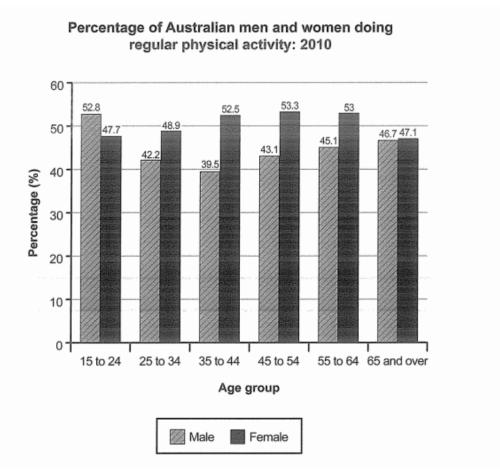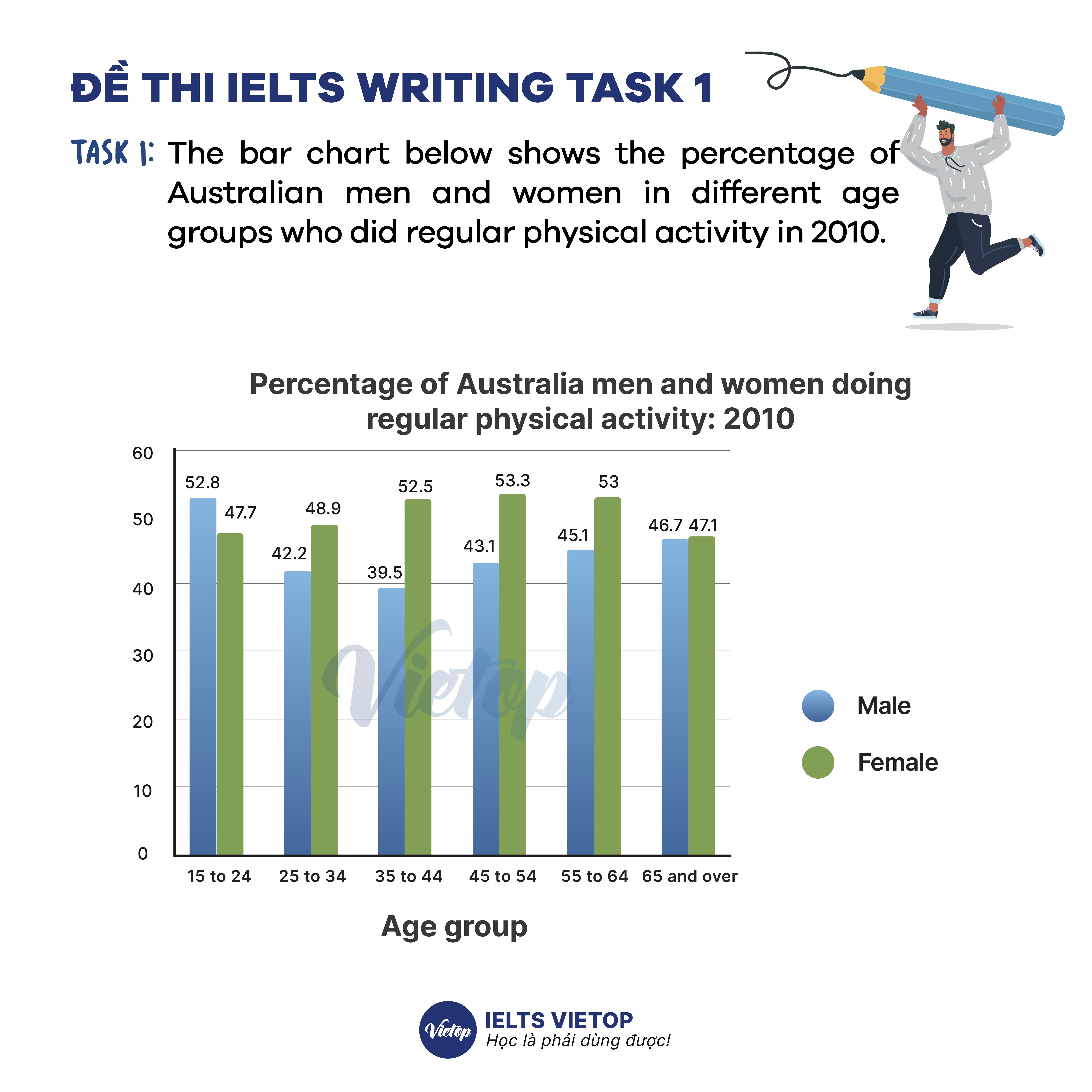Luyện thi IELTS Vietop gửi bạn bài Writing samples: Physical activities bên dưới nhé! Các bạn theo dõi và ôn luyện IELTS Writing thật tốt nhé!
Task 1:
The bar chart below shows the percentage of Australian men and women in different age groups who did regular physical activity in 2010.

The bar chart depicts the percentages of Australian males and females in various age groups who exercised regularly in 2010.
Overall, men’s engagement peaked between the ages of 15 and 24, while women’s participation peaked in the 45 to 54 age group. Besides, in every age group save the youngest, more women than men participated in regular exercise.

Women in the youngest age group who regularly exercised were 47.7%. After then, their participation increased significantly with age, peaking at 3% over a half in the 45-54 age group. Above that, it began to deteriorate, with only 47.1% of people in the most senior age group engaging in regular workout.
The lowest age group had the highest percentage of male involvement (52.8%). Additionally, this was the only category where there were more men than women participating in regular exercise. The involvement percentage for men then dropped to a low of just under 40% among those aged 35 to 44, before rising to 46.7% among those aged 65 and older. The rate was remarkably similar to that of women of the same age.
Task 2:
Scientists tell us that some activities are good for health and others are bad. Despite knowing that, millions of people still continue doing unhealthy activities. What are the causes and what are the solutions for this?
In contemporary society, a large proportion of the population continues to partake in unhealthy activities, irrespective of expert advice, which is being increasingly witnessed. During the course of this essay, I would discuss the main causes of this phenomenon and also propose feasible methods to alleviate this conundrum.
The continuation of harmful behaviours is linked to a number of factors. First off, because the negative impacts of a destructive lifestyle are cumulative and take time to manifest, people tend to underestimate them. Hence, people gradually become complacent about it. Furthermore, it might be difficult to break certain vices because they can be addictive. For instance, most recalcitrant smokers are aware of the harmful effects of smoking but find it difficult to cease due to a lack of determination. As can be seen, predicaments created by these elements are prominent.
For the aforementioned problems, there should be a wide variety of sources for the solutions. To commence, removing such challenges would require both increased public access to medical consultation and media attention to a healthy lifestyle. The importance of maintaining a healthy lifestyle must be reinforced in the media as it could influence the general people through prolonged exposure to the information. Furthermore, those who want to overcome their addiction can benefit from quick access to medical professionals. For instance, the prevalence of sickness is lower in nations with plenty of medical resources. Therefore, those actions may have a significant effect on these problems.
In conclusion, a large number of citizens participating in unhealthy activities and disregarding expert warnings is ubiquitous. Hence, a combination of solutions should be prioritised to alleviate the issue spontaneously.
- Partake (v): tham gia
- Conundrum (n): vấn đề nan giải
- Cumulative (adj): tích tụ theo thời gian
- Manifest (v): trở nên rõ ràng
- Recalcitrant (adj): cố chấp, bất hợp tác
- Predicament (n): vấn đề
Ubiquitous (adj): hiện hữu rõ ràng
source https://www.ieltsvietop.vn/tu-hoc-ielts/writing/writing-samples-physical-activities/
Nhận xét
Đăng nhận xét